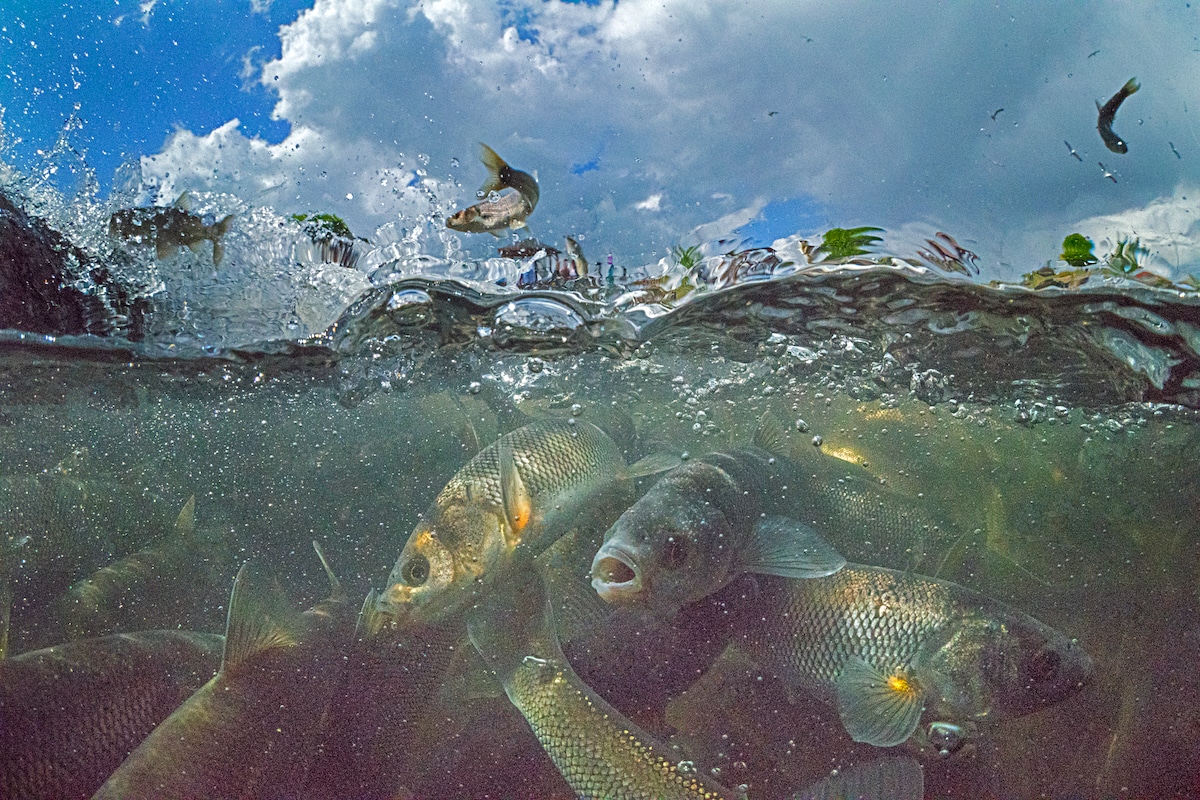More Than 22% of Migrating Species at Risk of Extinction, UN Report Finds

 Why you can trust us
Why you can trust us
Founded in 2005 as an Ohio-based environmental newspaper, EcoWatch is a digital platform dedicated to publishing quality, science-based content on environmental issues, causes, and solutions.
A first-ever United Nations report — State of the World’s Migratory Species — has found that more than 22 percent of migratory species are at risk of extinction globally due to overexploitation, habitat destruction and climate change.
The report was launched by the UN’s Convention on the Conservation of Migratory Species of Wild Animals (CMS) at the opening of the CMS COP14 wildlife conservation conference in Samarkand, Uzbekistan.
“Today’s report clearly shows us that unsustainable human activities are jeopardizing the future of migratory species – creatures who not only act as indicators of environmental change but play an integral role in maintaining the function and resilience of our planet’s complex ecosystems,” said Inger Andersen, UN Environment Programme executive director, in a press release. “The global community has an opportunity to translate this latest science of the pressures facing migratory species into concrete conservation action. Given the precarious situation of many of these animals, we cannot afford to delay, and must work together to make the recommendations a reality.”
The report also found that while some CMS-listed migratory species are improving, 44 percent are experiencing population declines. Almost all fish listed under CMS — 97 percent — are at risk of extinction.
According to the report, extinction risk is increasing for migratory species overall, not just those who are listed under CMS.
Key Biodiversity Areas are essential for the protection of threatened species, but 51 percent of those recognized as important for migratory animals listed under CMS are not protected.
Three quarters of CMS-listed species were found to be impacted by habitat degradation, loss and fragmentation — from activities like energy infrastructure, the expansion of transportation and agriculture — while seven of ten were affected by overexploitation, including overfishing, unsustainable hunting and capturing non-target animals, as seen in fisheries.
Pollution, invasive species and climate change were also pinpointed as having major impacts on migratory species.
Worldwide, there are 399 threatened or near threatened migratory species that are not listed under CMS at this time.
The report encouraged governments not to disturb migration paths and habitats when installing pipelines, dams, wind turbines and other infrastructure, reported Reuters.
“Migratory species rely on a variety of specific habitats at different times in their lifecycles. They regularly travel, sometimes thousands of miles, to reach these places. They face enormous challenges and threats along the way, as well at their destinations where they breed or feed. When species cross national borders, their survival depends on the efforts of all countries in which they are found. This landmark report will help underpin much-needed policy actions to ensure that migratory species continue to thrive around the world,” said CMS Executive Secretary Amy Fraenkel in the press release.
Migratory species are vital to the functioning of the planet’s ecosystems. They provide essential benefits, such as the transportation of key nutrients, pollination and carbon sequestration.
The report mostly focused on the 1,189 species listed under CMS that CMS Parties have recognized as being in need of international protection. It also includes analysis associated with more than 3,000 other migratory species not listed under CMS.
CMS-listed species are those who are in need of synchronized international action in order to improve their conservation status, or who are under extinction risk across much or all of their range.
Listing under CMS translates to a need for species to have international conservation cooperation. Addressing migratory species decline necessitates coordinated action between the private sector, governments and others.
Kelly Malsch, the report’s lead author and head of the Species Programme at UNEP-WCMC, said the nature of migration makes it difficult to protect these animals, as some travel thousands of miles across the borders of many countries, the BBC reported.
“Whether it is birds, or animals on land, or those swimming in our oceans, they are interacting with different country regulations which highlights the need for consistent approaches,” Malsch told the BBC.
Many of the threats migratory species face are worldwide drivers of environmental change that affect climate change and biodiversity loss.
Temperature changes can disturb the timing of animal migrations, cause extreme weather, drought and wildfires and lead to heat stress.
In the last three decades, 70 migratory species listed under CMS have become more endangered, including the Egyptian vulture, the wild camel and the steppe eagle. At the same time, only 14 listed species have seen an improvement in their conservation status, including humpback whales, blue whales, the black-faced spoonbill and the white-tailed sea eagle.
Fish are suffering the most, with migratory sharks, sturgeons and rays seeing 90 percent population declines since the 1970s.
In addition to highlighting concerns, the report also provides recommendations for action, including expanding and strengthening efforts to deal with the unsustainable and illegal taking of migratory species and the incidental capture of species; increasing the identification, connection, protection and effective management of important migratory locations; addressing with urgency those species most in danger of extinction; increasing efforts to deal with noise, light, plastics and chemical pollution, as well as climate change; and considering the expansion of CMS-listed species to include more migratory species who are at risk and in need of international and national attention.
In order to improve the status of migratory species, the report also recommends mapping and protecting feeding, breeding and stopover locations.
“There is hope,” Andersen said, as reported by the BBC.
According to Fraenkel, CMS will be implementing a new technical assistance program for nations to more effectively protect habitats, Reuters reported.
Contributors to the report included the International Union for Conservation of Nature (IUCN), the Zoological Society of London and BirdLife International.
Environmentalists have encouraged governments to keep their promise under the 2022 Kunming-Montreal Global Biodiversity Framework to protect 30 percent of global land and sea for nature by 2030.
“If governments do everything they have committed to do, then the next (UN report) will have some good news,” said Susan Lieberman, Wildlife Conservation Society’s vice-president of international policy, who is attending CMS COP14, as reported by Reuters.
Subscribe to get exclusive updates in our daily newsletter!
By signing up, you agree to the Terms of Use and Privacy Policy & to receive electronic communications from EcoWatch Media Group, which may include marketing promotions, advertisements and sponsored content.

 233k
233k  41k
41k  Subscribe
Subscribe 




